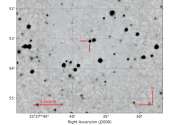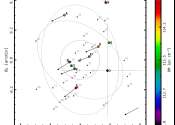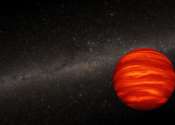New cataclysmic variable discovered by astronomers
By analyzing the data from ESA's XMM-Newton and Gaia satellites, astronomers from the Leibniz Institute for Astrophysics Potsdam (AIP) in Germany and elsewhere have detected a new magnetic cataclysmic variable system, most ...





